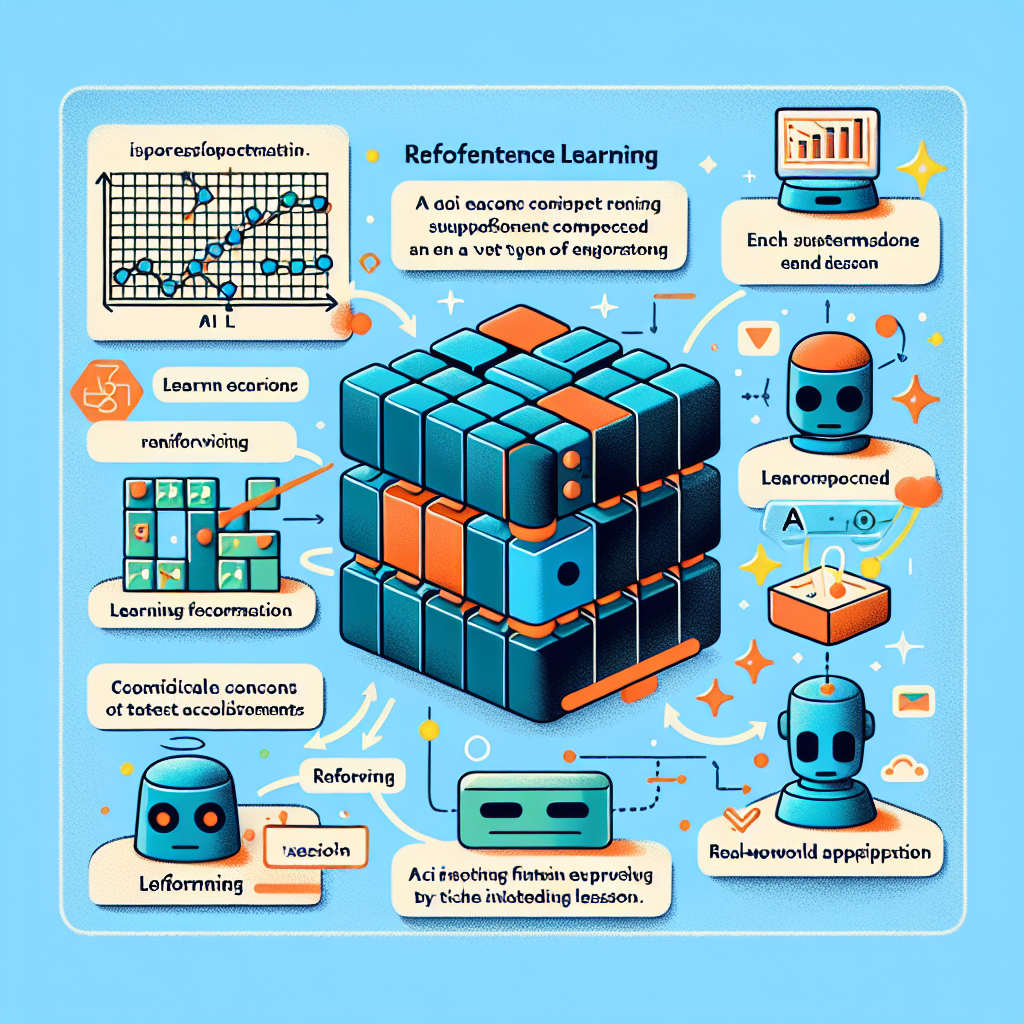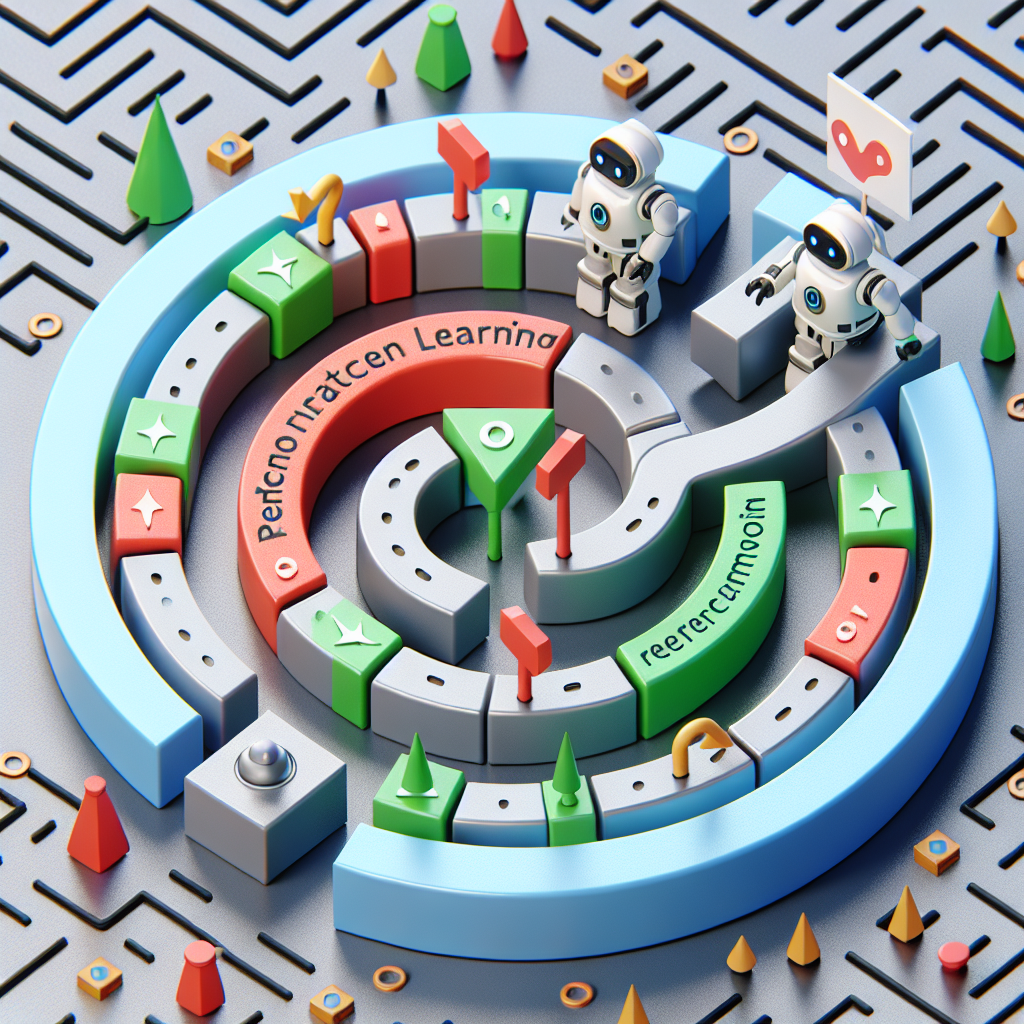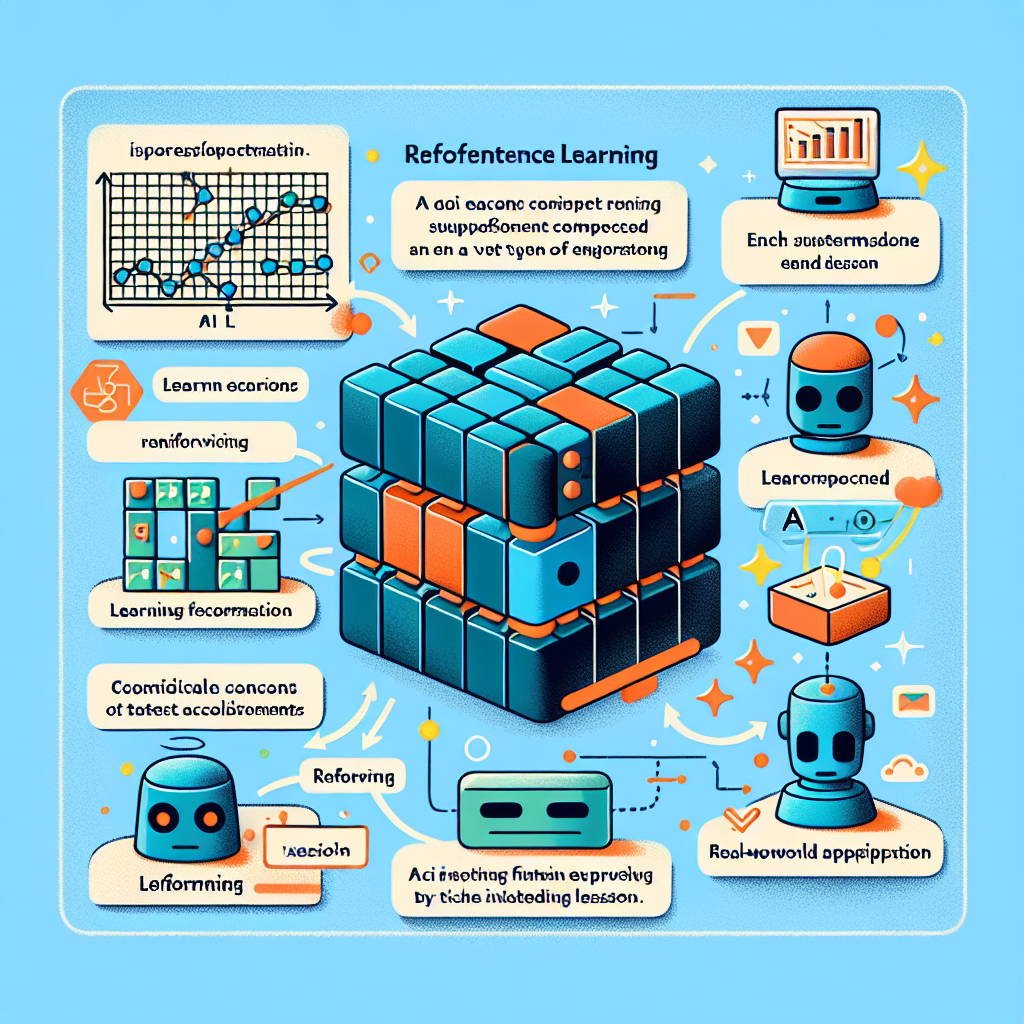Have you ever marveled at a robot intuitively navigating its surrounding environment or an AI system mastering complex games with sheer ease? If so, you may have witnessed the power of reinforcement learning. In this article, we’ll uncover the fascinating world of reinforcement learning and explore how machines learn to make decisions through interaction and feedback. Let’s dive in and demystify the concept behind this cutting-edge technology.
What is Reinforcement Learning?
Reinforcement Learning is a subfield of Artificial Intelligence (AI) that focuses on training agents to make decisions and take actions in an environment to maximize a reward or minimize a penalty. Unlike traditional machine learning techniques, reinforcement learning does not rely on labeled datasets but learns through interacting with the environment and receiving feedback in the form of rewards or punishments.

Definition
Reinforcement Learning can be defined as a computational approach to learning whereby an agent learns to interact with its environment and take actions based on feedback in order to maximize a cumulative reward signal. The agent learns through trial and error and uses reinforcement signals to guide its behavior towards achieving a desired outcome.
Key Concepts
There are several key concepts that underpin reinforcement learning:
-
Agents: Agents are the entities that interact with the environment and make decisions based on their observations.
-
Environment: The environment is the external system in which the agent operates and receives feedback. It can be either real or simulated.
-
Rewards: Rewards are the positive or negative signals that an agent receives from the environment based on its actions. They serve as the learning signal and guide the agent’s behavior.
-
States: States represent the different configurations of the environment at a given time. The agent’s actions are influenced by the current state of the environment.
-
Actions: Actions are the decisions or behaviors that an agent can take based on its observations. The agent aims to select actions that lead to maximum rewards.
Applications
Reinforcement Learning has found applications in various domains, including:
-
Game Playing: Reinforcement learning algorithms have achieved significant success in game playing scenarios, such as AlphaGo, a program developed by DeepMind that defeated human champions in the game of Go.
-
Robotics: Reinforcement learning enables robots to learn autonomously by interacting with their environments. This allows them to adapt to unforeseen situations and perform complex tasks.
-
Smart Manufacturing: Reinforcement learning can be used to optimize production processes in industries by learning the most efficient strategies to minimize costs and maximize productivity.
-
Recommendation Systems: Reinforcement learning algorithms can be used to personalize recommendations by learning from user feedback and improving over time.
-
Traffic Control: Reinforcement learning techniques can optimize traffic flow by learning to make real-time decisions based on changing traffic conditions.
How Does Reinforcement Learning Work?
Reinforcement learning operates on the principle of trial and error learning. The agent interacts with the environment and takes actions based on its current observations. The environment then provides feedback in the form of rewards or punishments, which the agent uses to update its decision-making policy.
At the core of reinforcement learning is the notion of an action-value function, which represents the expected return (cumulative reward) an agent can achieve by taking a particular action in a given state. The agent seeks to maximize this expected return by following an optimal policy.

Components of Reinforcement Learning
Reinforcement learning consists of three main components:
-
Policy: The policy determines the way an agent selects actions based on its observations. It can be deterministic (mapping states directly to actions) or stochastic (assigning probabilities to each action).
-
Value Function: The value function estimates the expected cumulative reward an agent can obtain from a given state or state-action pair. It helps the agent evaluate the potential of different actions or states.
-
Model: The model is an optional component that represents the agent’s knowledge of the environment. It can simulate the possible outcomes of actions, allowing the agent to plan and optimize its decision-making process.
Types of Reinforcement Learning
There are different types of reinforcement learning algorithms that cater to various scenarios:
-
Model-based Methods: These algorithms rely on an explicit model of the environment. They learn the dynamics of the environment and use it for planning, prediction, and decision-making.
-
Model-free Methods: These algorithms do not require a model of the environment. They directly learn the optimal policy or value function through interaction and trial and error.
-
Value-based Methods: These algorithms aim to learn the optimal value function and then derive the optimal policy from it.
-
Policy-based Methods: These algorithms directly learn the optimal policy without explicitly estimating the value function.
-
Actor-Critic Methods: These algorithms combine elements of both value-based and policy-based methods. They use value function approximation along with a learned policy to achieve better performance.
Challenges and Limitations
Reinforcement Learning comes with its fair share of challenges and limitations:
-
Sample Efficiency: Reinforcement learning often requires a large number of interactions with the environment to achieve good performance. This can be time-consuming, especially in complex domains.
-
Exploration vs. Exploitation: Finding a balance between exploring new actions and exploiting previously learned actions is a challenging trade-off in reinforcement learning. Too much exploration can delay converging to an optimal policy.
-
Reward Design: Designing appropriate reward functions is crucial in reinforcement learning. A poorly designed reward function can lead to suboptimal behavior or unforeseen side effects.
Advantages and Disadvantages
Reinforcement Learning offers several advantages:
-
Adaptability: Reinforcement learning agents can adapt to changing environments and learn to perform tasks without human intervention or explicit programming.
-
Generalization: Reinforcement learning algorithms can generalize from past experiences and apply learned knowledge to unseen situations.
-
Autonomous Learning: Reinforcement learning enables agents to learn autonomously, reducing the need for extensive external supervision.
However, there are also some disadvantages:
-
Training Time: Reinforcement learning algorithms typically require a substantial amount of training time to reach satisfactory performance levels.
-
Exploration Challenges: Exploring the state and action space in complex environments can be time-consuming and computationally expensive.
-
Bias and Ethics: Reinforcement learning algorithms are only as good as the data they train on, and biased or unethical training data can lead to undesirable outcomes.
Comparison with Other Learning Approaches
Reinforcement Learning differs from other learning approaches, such as supervised learning and unsupervised learning, in several ways:
-
Supervised Learning: Supervised learning relies on labeled datasets to learn patterns and make predictions. In contrast, reinforcement learning learns through trial and error and uses feedback signals instead of explicit labels.
-
Unsupervised Learning: Unsupervised learning discovers hidden patterns and structures in unlabeled data, while reinforcement learning focuses on learning optimal actions and decision-making in an environment.
-
Semi-Supervised Learning: Semi-supervised learning combines labeled and unlabeled data, whereas reinforcement learning does not rely on labeled data but learns through interactions and feedback signals.
Future of Reinforcement Learning
The future of reinforcement learning is promising, with ongoing research and advancements in the field. Some areas of focus include:
-
Deep Reinforcement Learning: The combination of reinforcement learning with deep neural networks has shown great potential in solving complex problems, such as game playing and robotics.
-
Transfer Learning: Transfer learning aims to transfer knowledge learned in one task to another related task. Applying transfer learning techniques to reinforcement learning can enhance the agent’s ability to generalize across different environments.
-
Multi-Agent Reinforcement Learning: Multi-agent reinforcement learning explores how multiple agents can learn to interact and cooperate in complex environments, leading to more sophisticated decision-making capabilities.
-
Ethical and Fair Reinforcement Learning: Ensuring ethical and fair behavior in reinforcement learning algorithms is a growing concern. Research is being conducted to address issues related to biases and undesired outcomes.
In conclusion, reinforcement learning is a powerful approach to AI that enables agents to learn through trial and error and interact with their environments to maximize rewards. It has wide-ranging applications and offers unique advantages, along with challenges and limitations. As advancements continue to be made, the future of reinforcement learning holds great potential for solving complex problems and enabling autonomous learning in various domains.
